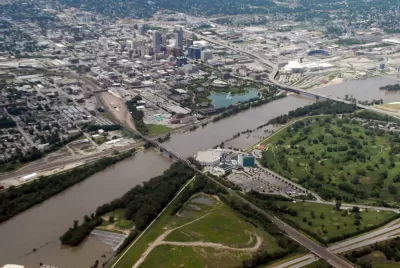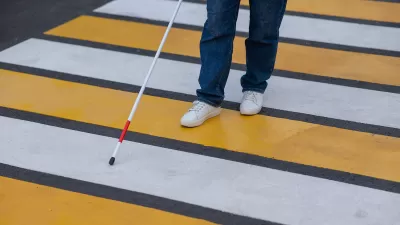The plan calls for more frequent service, expanded bus lines, and connectivity between different modes of transit.

Omaha's Metro Transit agency has launched an initiative designed to "fuse modern connectivity with the growing demand for public transit" and shift "Omaha toward a city that’s virtually car-less," reports Lauren Melendez. "Although Metro Transit operates hundreds of general bus routes including OBRT and MOBY Paratransit, their ADA accessible service, its connectivity goals aren’t limited to buses." According to Jason Rose, Metro Transit’s Communications Manager, "[w]e want people to have options, whether that’s being able to choose to ride the bus or ride a bike or access a bike lane or access a scooter or use their wheelchair on a sidewalk or walk."
Rose said the agency's goals include "[b]etter bus stops, more frequent buses, more buses in more places, potential ORBT expansion and potential service types that we don't serve right now." They are also partnering with the Greater Omaha Chamber of Commerce and their Connect-Go program, which aims to create a comprehensive network of transportation modes and "unify the transportation vision so that every mode is considered together."
"The North Omaha area is considered Metro Transit’s priority corridor, meaning the neighborhood would be the first to see ridership changes and enhancements in the coming months or years because it is so massive." The agency is still working to secure funding and establish a timeline for the improvements, and asking the public to provide their input and suggestions.
FULL STORY: Metro Transit focusing on North Omaha for new, enhanced service

Planetizen Federal Action Tracker
A weekly monitor of how Trump’s orders and actions are impacting planners and planning in America.

Congressman Proposes Bill to Rename DC Metro “Trump Train”
The Make Autorail Great Again Act would withhold federal funding to the system until the Washington Metropolitan Area Transit Authority (WMATA), rebrands as the Washington Metropolitan Authority for Greater Access (WMAGA).

The Simple Legislative Tool Transforming Vacant Downtowns
In California, Michigan and Georgia, an easy win is bringing dollars — and delight — back to city centers.

The States Losing Rural Delivery Rooms at an Alarming Pace
In some states, as few as 9% of rural hospitals still deliver babies. As a result, rising pre-term births, no adequate pre-term care and harrowing close calls are a growing reality.

The Small South Asian Republic Going all in on EVs
Thanks to one simple policy change less than five years ago, 65% of new cars in this Himalayan country are now electric.

DC Backpedals on Bike Lane Protection, Swaps Barriers for Paint
Citing aesthetic concerns, the city is removing the concrete barriers and flexposts that once separated Arizona Avenue cyclists from motor vehicles.
Urban Design for Planners 1: Software Tools
This six-course series explores essential urban design concepts using open source software and equips planners with the tools they need to participate fully in the urban design process.
Planning for Universal Design
Learn the tools for implementing Universal Design in planning regulations.
Smith Gee Studio
City of Charlotte
City of Camden Redevelopment Agency
City of Astoria
Transportation Research & Education Center (TREC) at Portland State University
US High Speed Rail Association
City of Camden Redevelopment Agency
Municipality of Princeton (NJ)





























